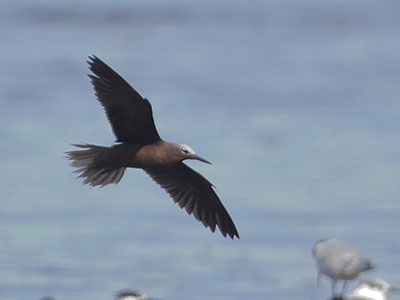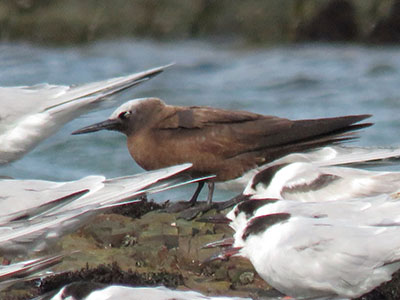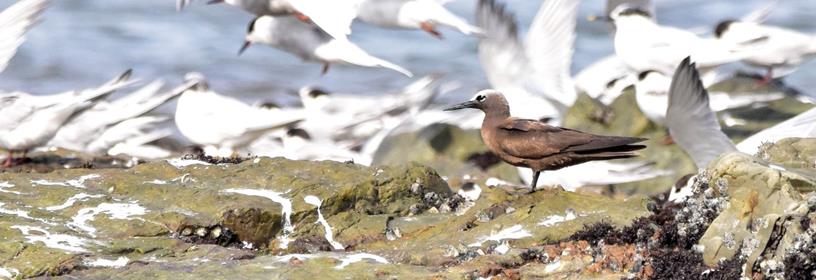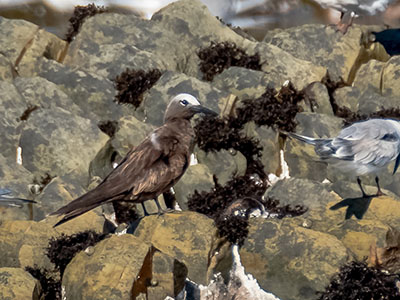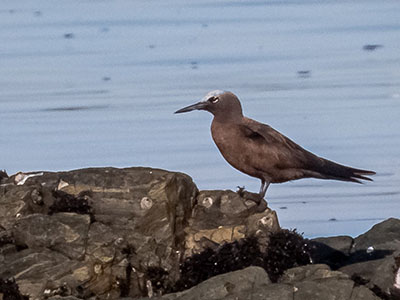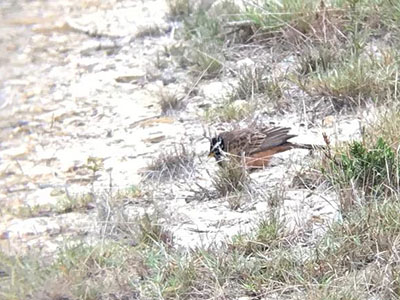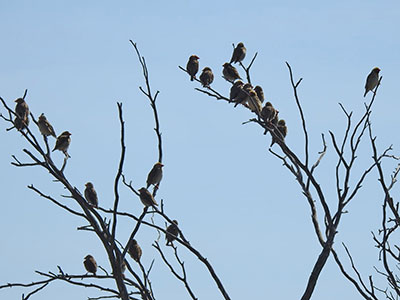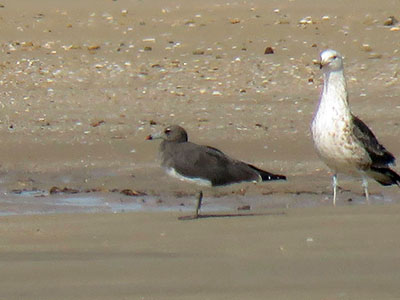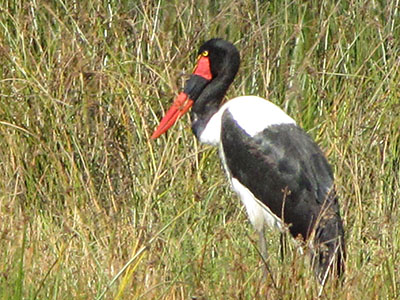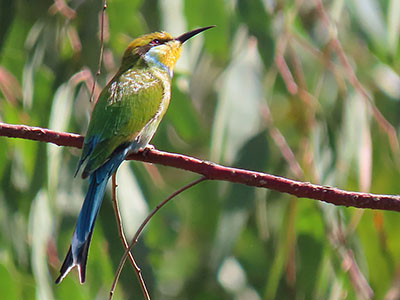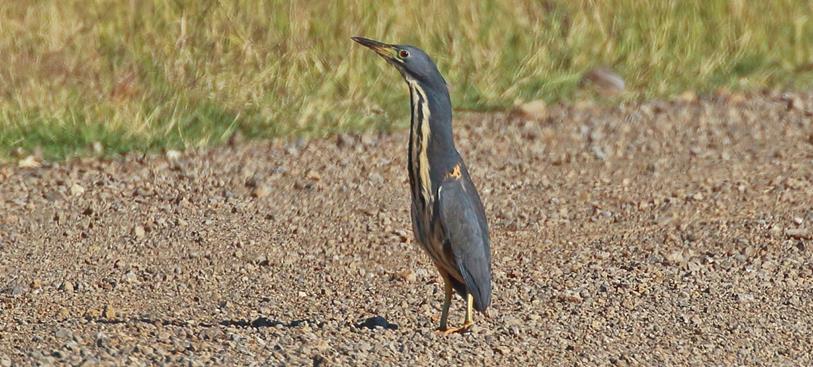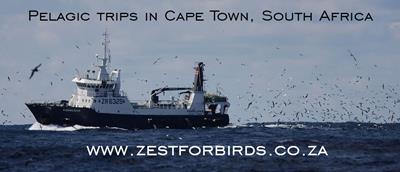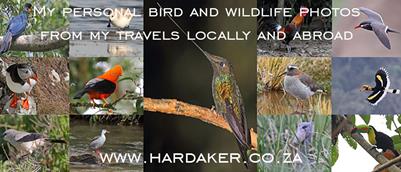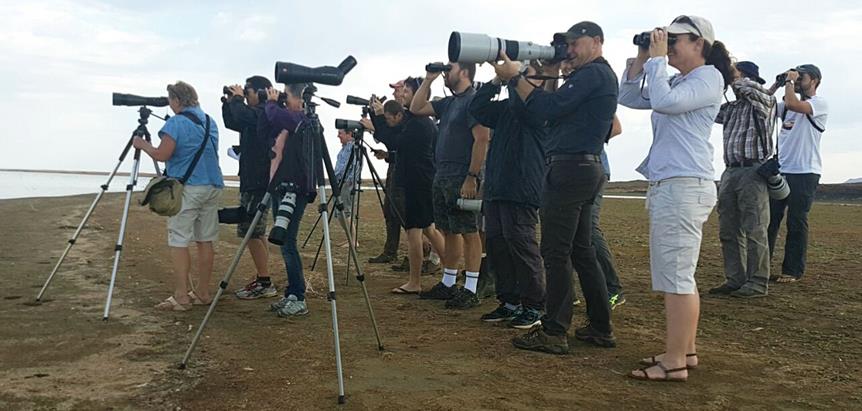SA Rare Bird News Report - 15 April 2021
Trevor Hardaker
| |||||||||
| |||||||||
S O U T H E R N A F R I C A N R A R E B I R D N E W S R E P O R T | |||||||||
|
|
| |||||||
This is the Southern African Rare Bird News Report issued at 18h00 on Thursday, 15 April 2021.
Information has been gleaned from various websites, email groups as well as from individual observers who have passed on their sightings. This report cannot be taken as being totally comprehensive as it is based only on information made available at the time of writing. All bird sightings reported here are reported in good faith based on information as provided by the observers. Any inaccuracies are totally unintentional and the writer cannot be held liable for these.
None of the records included in this report have undergone any adjudication process with any of the subregion’s Rarities Committees, so inclusion in this report does not constitute any official confirmation of the particular record. Observers are still encouraged to make the necessary submissions accordingly.
For those who may have only joined the group recently and are interested in finding out what has been seen in the past, previous reports can be viewed at http://groups.google.co.za/group/sa-rarebirdnews |
| SARBN is proud to be associated with the following brands: | |||||||
| |||||||||
| |||||||||
| |||||||||
|
|
| |||||||
| |||||||||
|
| ||||||||
PLEASE CONSIDER FOLLOWING ME ON SOCIAL MEDIA BY CLICKING ON THE LINKED ICONS BELOW: | |||||||||
|
| ||||||||
|
| ||||||||
| |||||||||
|
| ||||||||
Just one scarcity report to mention from the last few days…
EUROPEAN HONEY BUZZARD:
· One near Siveyo (Namibia) at -17.487, 18.444 yesterday.
Before we get started with the main report, I would also like to make everyone aware that we have another new bird for the Southern African subregion, except it is definitely not twitchable. Last month, Pieter Diederichs found a dead seabird on the beach in Milnerton and collected the carcass because he was unsure of what it was. Once he circulated the photos around to a few people, it was immediately recognisable as one of the DIVING PETREL species. This group of birds is notoriously difficult to separate from one another and, given the state of the carcass, it was never going to be easy to make a definitive call on the bird. Some measurements were taken but even morphometrics are considered unreliable at times with this group, so the decision has been taken to do a genetic analysis on this bird now. Tissue samples have been taken and have are being prepared for the necessary work. At the moment, it looks like we would need to wait until mid-year at best (and possibly even later) before we have an answer on which species of DIVING PETREL it actually is but, whatever it turns out to be, it will be a new species for the Southern African list. It will also be a little bit of history in the making as it will be the first time that a new species will be added to our list based on genetic analysis – interesting times indeed! More info as and when it finally becomes available.
Alright, on to some current news and, starting in the Western Cape, the popular LESSER NODDY was still in the Tern roost opposite Greenways in The Strand today while, close by, the AFRICAN PIED WAGTAIL was also still at Paardevlei until at least Tuesday. The influx of RED-BILLED QUELEAS also continues with a group of over 20 seen in a garden in Kommetjie on Tuesday (and another smaller group seen in the same area this morning), a group of 12 seen at Avondrustvlei farm in Noordhoek on Tuesday, a single bird seen in a garden in Hermanus yesterday and a handful of birds also seen in a garden in Fisherhaven on Monday. Up on the west coast, the BROAD-BILLED SANDPIPER was still at Geelbek in the West Coast National Park yesterday and the GOLIATH HERON was also still along the Berg River in Velddrif close to Kliphoek Salt Pans yesterday. Moving eastwards, a CINNAMON-BREASTED BUNTING was also a surprizing find on the eastern side of De Hoop Nature Reserve this morning, unfortunately in an area that is not really accessible to the public. | |||||||||
|
| ||||||||
|
| ||||||||
Lesser Noddy at The Strand © David Hoddinott | Lesser Noddy at The Strand © Brian du Preez | ||||||||
|
| ||||||||
|
| ||||||||
Lesser Noddy at The Strand © Tinus le Roux | Lesser Noddy at The Strand © Gielie Bester | ||||||||
|
| ||||||||
| |||||||||
Lesser Noddy at The Strand © Hilton Thomson | |||||||||
|
| ||||||||
|
| ||||||||
Lesser Noddy at The Strand © Albert McLean | Lesser Noddy at The Strand © Diane McLean | ||||||||
|
| ||||||||
|
| ||||||||
Lesser Noddy at The Strand © Dana Goldberg | Cinnamon-breasted Bunting at De Hoop Nature Reserve © Christina Hagen | ||||||||
|
| ||||||||
|
| ||||||||
Red-billed Quelea in Kommetjie © Robert Cooper | Red-billed Queleas in Kommetjie © Pamela Cooper | ||||||||
|
| ||||||||
In the Eastern Cape, the mega SOOTY GULL was still at the Swartkops River mouth yesterday while a single WHITE-BACKED VULTURE was seen near Peasland waterhole in Addo National Park yesterday and presumably the same individual was seen in the park at -33.616, 25.821 today as well. | |||||||||
|
| ||||||||
|
| ||||||||
Sooty Gull at the Swartkops River mouth © Digby Cyrus | White-backed Vulture in Addo National Park © Edwin Polden | ||||||||
|
| ||||||||
Moving up the coast into Kwazulu Natal, an AYRES’S HAWK EAGLE was seen over Winterskloof in the Hilton area this morning, a pair of STRIPED CRAKES with chicks were found at Phinda Private Game Reserve on Tuesday and an out of range SADDLE-BILLED STORK was reported on a farm about 30km north of Utrecht on Monday.
In the Free State, a single DWARF BITTERN was seen along the S237 dirt road about 22km west of Welkom at -27.967, 26.498 on Tuesday.
And finally, in Gauteng, there have been a couple of reports of SWALLOW-TAILED BEE-EATERS with at least 5 birds seen near the entrance to Bronkhorstspruit Dam Nature Reserve on Tuesday and another 3 individuals seen at De Tweedespruit yesterday. | |||||||||
|
| ||||||||
|
| ||||||||
Saddle-billed Stork north of Utrecht © Wesley Hendriks | Swallow-tailed Bee-eater near Bronkhorstspruit Dam Nature Reserve © Johan van der Walt | ||||||||
|
| ||||||||
| |||||||||
Dwarf Bittern west of Welkom © Andy Harrison | |||||||||
|
| ||||||||
Thank you to all observers who have contributed their records. Please continue to send through any reports of odd birds as well as continued updates on the presence of rarities already previously reported, no matter how mundane you think they may be. Even if you think someone else has probably sent in a report, rather send the report yourself as well. The only way to improve this service and to make it as useful as possible to everyone is if it can be as comprehensive as possible.
Kind regards Trevor | |||||||||
| |||||||||
TREVOR HARDAKER Cape Town, South Africa |
|
|
|
| |||||
| |||||||||
| |||||||||
| |||||||||




